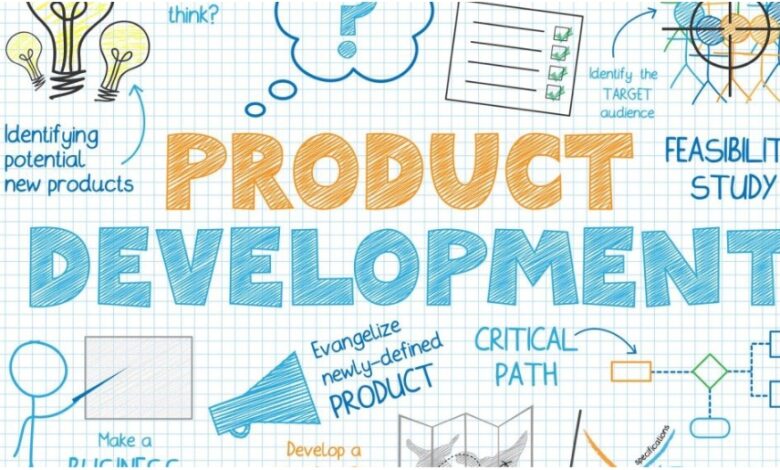Comprehensive Guide to Product Development: From Concept to Market Success

Product development is the cornerstone of innovation and business growth. It involves the transformation of an idea into a marketable product, requiring a blend of creativity, strategic planning, and meticulous execution. In this comprehensive guide, we will explore the various stages of product development, offering detailed insights into each phase to ensure your product’s success in the competitive marketplace.
Understanding the Importance of Product Development
Product development is not just about creating something new; it’s about delivering value to your target audience. A successful product meets customer needs, solves specific problems, and offers a unique proposition that sets it apart from competitors. This process is critical for companies looking to maintain their competitive edge, drive growth, and achieve long-term profitability.
Stages of Product Development
1. Ideation and Concept Development
The first step in product development is ideation, where innovative ideas are generated, analyzed, and refined. This stage involves brainstorming sessions, market research, and feasibility studies to identify potential opportunities. The goal is to develop a concept that aligns with market demand and your company’s capabilities.
- Market Research: Conduct thorough research to understand market trends, customer needs, and the competitive landscape. This data-driven approach ensures that your product idea is viable and has the potential to succeed.
- Feasibility Studies: Assess the technical, financial, and operational feasibility of your product idea. This involves evaluating the resources required, potential risks, and the overall return on investment (ROI).
2. Product Design and Development
Once the concept is validated, the next step is product design and development. This phase involves translating the idea into a tangible product through detailed design specifications and prototypes.
- Design Specifications: Develop detailed product specifications that outline the features, functionality, and aesthetics of the product. These specifications serve as a blueprint for the development team.
- Prototyping: Create prototypes to test the design and functionality of the product. Prototyping is essential for identifying potential flaws and making necessary adjustments before mass production.
- Testing and Validation: Conduct rigorous testing to ensure the product meets quality standards and performs as expected. This includes user testing, quality assurance, and compliance with industry regulations.
3. Product Development and Manufacturing
With a validated design, the next phase is product development and manufacturing. This involves scaling the prototype into a full production model and preparing for mass production.
- Manufacturing Process: Choose the appropriate manufacturing process that aligns with your product’s design, material requirements, and production volume. Common methods include injection molding, 3D printing, and CNC machining.
- Supply Chain Management: Establish a robust supply chain to ensure a consistent flow of materials and components. Effective supply chain management is crucial for maintaining production schedules and controlling costs.
- Quality Control: Implement strict quality control measures to ensure that each product meets the required specifications and quality standards. This minimizes defects and enhances customer satisfaction.
4. Market Testing and Validation
Before launching the product, it’s essential to conduct market testing to gauge customer response and make any final adjustments.
- Beta Testing: Release the product to a select group of users for beta testing. Collect feedback on the product’s performance, usability, and overall experience.
- Market Research: Analyze the results of the beta testing phase to identify potential improvements. Use this data to refine the product and optimize it for the target market.
- Final Adjustments: Based on the feedback received, make necessary adjustments to the product design, features, or packaging. This step ensures that the product is fully optimized for the market.
5. Product Launch and Marketing Strategy
The product launch is a critical phase that requires a well-planned marketing strategy to maximize visibility and sales.
- Marketing Campaign: Develop a comprehensive marketing campaign that targets your ideal customer base. Utilize a mix of digital marketing, social media, content marketing, and traditional advertising to create buzz around the product launch.
- Distribution Strategy: Establish a distribution strategy that ensures your product reaches the target market efficiently. This may involve partnerships with retailers, e-commerce platforms, or direct-to-consumer channels.
- Sales Support: Provide sales teams with the necessary tools and training to effectively promote the product. This includes product demos, sales collateral, and detailed information on product features and benefits.
6. Post-Launch Review and Continuous Improvement
After the product launch, it’s essential to review the product’s performance and gather customer feedback for continuous improvement.
- Performance Analysis: Monitor key performance indicators (KPIs) such as sales, customer satisfaction, and market share. This analysis helps identify areas for improvement and informs future product development efforts.
- Customer Feedback: Collect feedback from customers to understand their experience with the product. This feedback is invaluable for making iterative improvements and enhancing future product offerings.
- Continuous Improvement: Implement a continuous improvement process to refine the product based on customer feedback and market trends. This ensures that your product remains competitive and meets evolving customer needs.
Key Considerations for Successful Product Development
Innovation and Creativity
Innovation is at the heart of successful product development. Encourage a culture of creativity within your organization to foster new ideas and approaches. This can lead to the development of products that not only meet market demands but also set new industry standards.
Collaboration and Communication
Effective collaboration and communication across all departments are crucial for the smooth execution of product development. Ensure that teams are aligned, with clear roles and responsibilities, to avoid any bottlenecks or miscommunication.
Risk Management
Product development is inherently risky, with potential challenges ranging from technical issues to market acceptance. Develop a risk management plan that identifies potential risks and outlines strategies to mitigate them. This proactive approach can help you navigate obstacles and ensure a successful product launch.
Customer-Centric Approach
Always keep the customer at the center of your product development process. Understanding customer needs, preferences, and pain points is essential for creating products that resonate with the target audience. A customer-centric approach increases the likelihood of product success and builds long-term customer loyalty.
Conclusion
Product development is a multifaceted process that requires careful planning, execution, and continuous improvement. By following the steps outlined in this guide, businesses can enhance their product development capabilities and increase their chances of success in the competitive marketplace. Whether you are launching a new product or improving an existing one, a strategic and customer-focused approach is key to achieving your goals. At Early Bird Labs, we are committed to helping businesses innovae and succeed by providing expert guidance throughout the product development journey.

